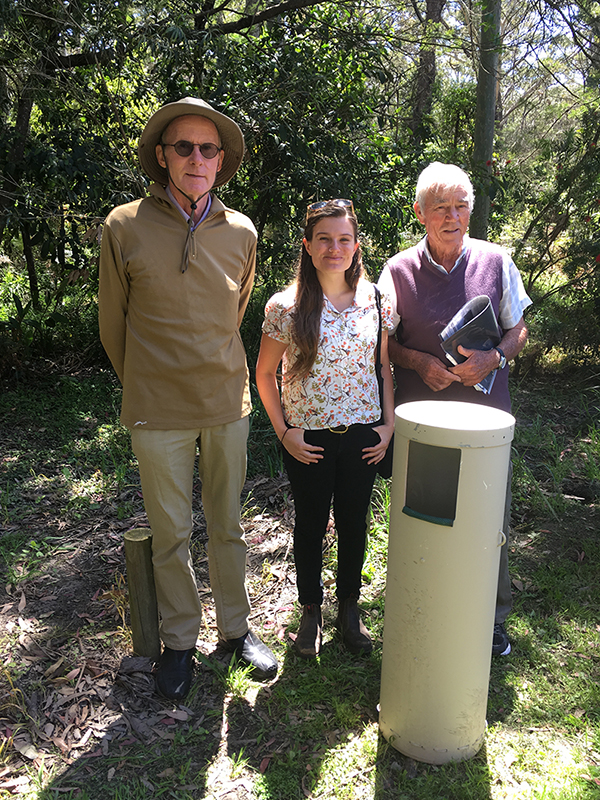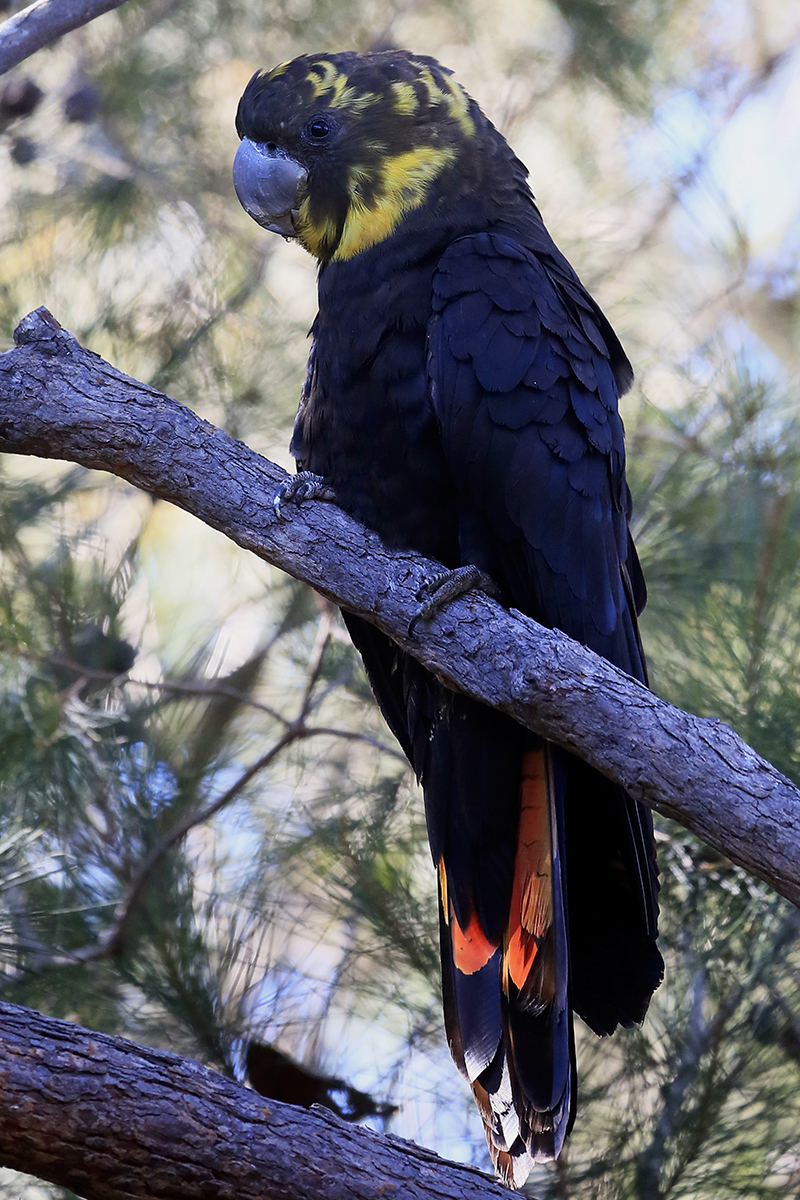Save Our Glossies
  Norm Webb, a member of BLS and Shoalhaven Birders, is the coordinator of a Bushcare site in the woodlands beside the Jervis Bay Maritime Museum in Huskisson. This site is bordered by the Museum grounds, mangroves and Woollamia Road and offers habitat to a wide range of bird species, notably the threatened Glossy Blackcockatoo. The woodland has patches of she-oak with several old trees with nesting hollows close by, both essential for the survival of this specialist bird.
Norm Webb, a member of BLS and Shoalhaven Birders, is the coordinator of a Bushcare site in the woodlands beside the Jervis Bay Maritime Museum in Huskisson. This site is bordered by the Museum grounds, mangroves and Woollamia Road and offers habitat to a wide range of bird species, notably the threatened Glossy Blackcockatoo. The woodland has patches of she-oak with several old trees with nesting hollows close by, both essential for the survival of this specialist bird.
In July, Norm organised a dozen volunteers from BLS, Shoalhaven Birders and Vincentia Bushcare to plant nearly 100 trees at the Bushcare site to kick off his plan for the "Save our Glossies" project. The site included a single she-oak that was planted about two years ago. It is already more than 4m tall and shows this is an ideal location for the planting. Another BLS member, Hugh Capes, who has seen Glossies on his property at Tomerong, built some large nesting boxes, which will be set up on trees adjacent to the plantings.
Part of the inspiration for "Save our Glossies" was the success of the Office of Environment & Heritage's "Glossies in the Mist" project in the Southern Highlands. We were delighted when Lauren Hook, OEH Threatened Species Officer, agreed to give a talk about the project at the Museum as part of our Bird Week calendar in late 2018.
  The talk gave a number of insights into Glossies: how to age and sex a bird by the stripes on its feathers; they feed on around 60-80 she-oak cones per day and spend 30-40% of their day feeding; breeding males will eat double this amount and then feed the female and young in the nest; it takes about three minutes to process a she-oak cone, though older Glossies are faster; females lay a single small egg; 90 days after hatching the fledgling is ready to leave the nest; the juvenile remains dependent and receives food from its parents for the next 6- 12 months.
The talk gave a number of insights into Glossies: how to age and sex a bird by the stripes on its feathers; they feed on around 60-80 she-oak cones per day and spend 30-40% of their day feeding; breeding males will eat double this amount and then feed the female and young in the nest; it takes about three minutes to process a she-oak cone, though older Glossies are faster; females lay a single small egg; 90 days after hatching the fledgling is ready to leave the nest; the juvenile remains dependent and receives food from its parents for the next 6- 12 months.
These aspects of their ecology combined with competition for hollows, loss of habitat, climate change and more, all contribute to the bird's threatened status. Lauren also talked about the long-term "Glossies in the Mist" project in the Southern Highlands and her work with private landowners between Belanglo NP and Penrose SF; a critical link for the bird between the Blue Mountains and Morton NP.
Over 7000 trees have been planted and with increasing support of 250 landowners and awareness of Glossies, the project is making great progress and importantly has committed funding till 2021. All Bushcare projects across the Shoalhaven are making a real difference for bird conservation, but it is exciting to see this new project focussing on one of our most threatened birds.
The recent plantings, nest boxes and the inspiration to build on the success of the work in the Southern Highlands means that this small patch of woodland will raise awareness about the Glossy Black-Cockatoo and help "Save our Glossies" into the future.
(Click the images on the left to enlarge them, then click again to reduce them)
|